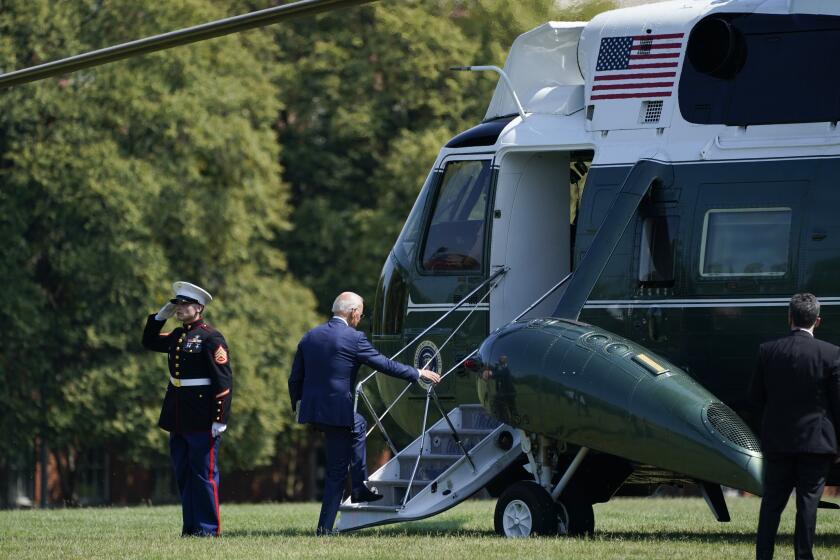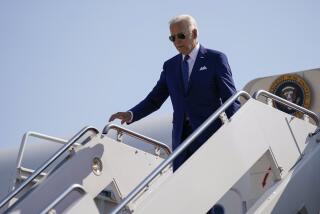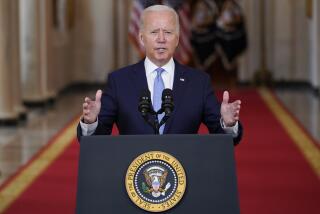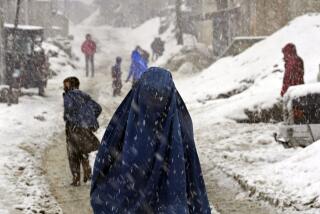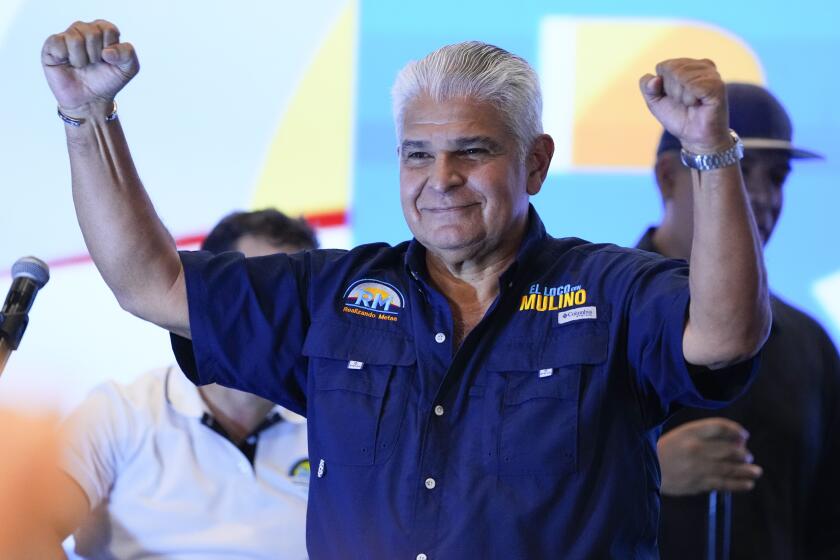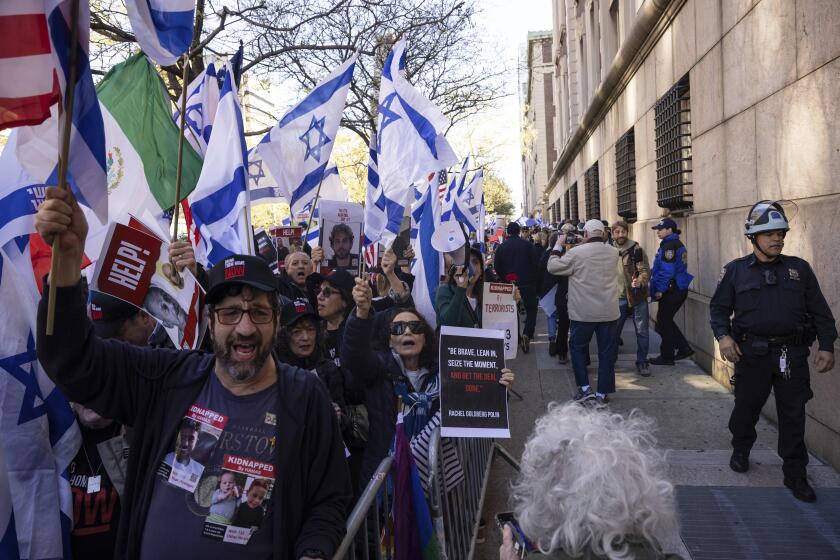1,000 more U.S. troops to be deployed as another big Afghan city falls to insurgents

Taliban fighters on Saturday seized the Afghan government’s last big northern stronghold, the city of Mazar-i-Sharif, according to news reports and provincial officials, dealing the latest staggering blow to the country’s beleaguered government.
At the same time, insurgents tightened a near-encirclement of Afghanistan’s capital, pushing to within a few dozen miles of Kabul as more American troops flew in to help with an airlift of U.S. Embassy personnel. The Biden administration said Saturday that an additional 1,000 U.S. service members would be deployed to aid in that effort, but the president again rejected criticism of the U.S. decision to conclude its overall Afghan mission by the end of this month.
“One more year, or five more years, of U.S. military presence would not have made a difference if the Afghan military cannot or will not hold its own country,” President Biden said in a statement.
Meanwhile, an already dire humanitarian crisis deepened as tens of thousands of frightened refugees from cities and the countryside across Afghanistan thronged Kabul, fearing that the takeover of their communities meant a reimposition of harsh Taliban rule.
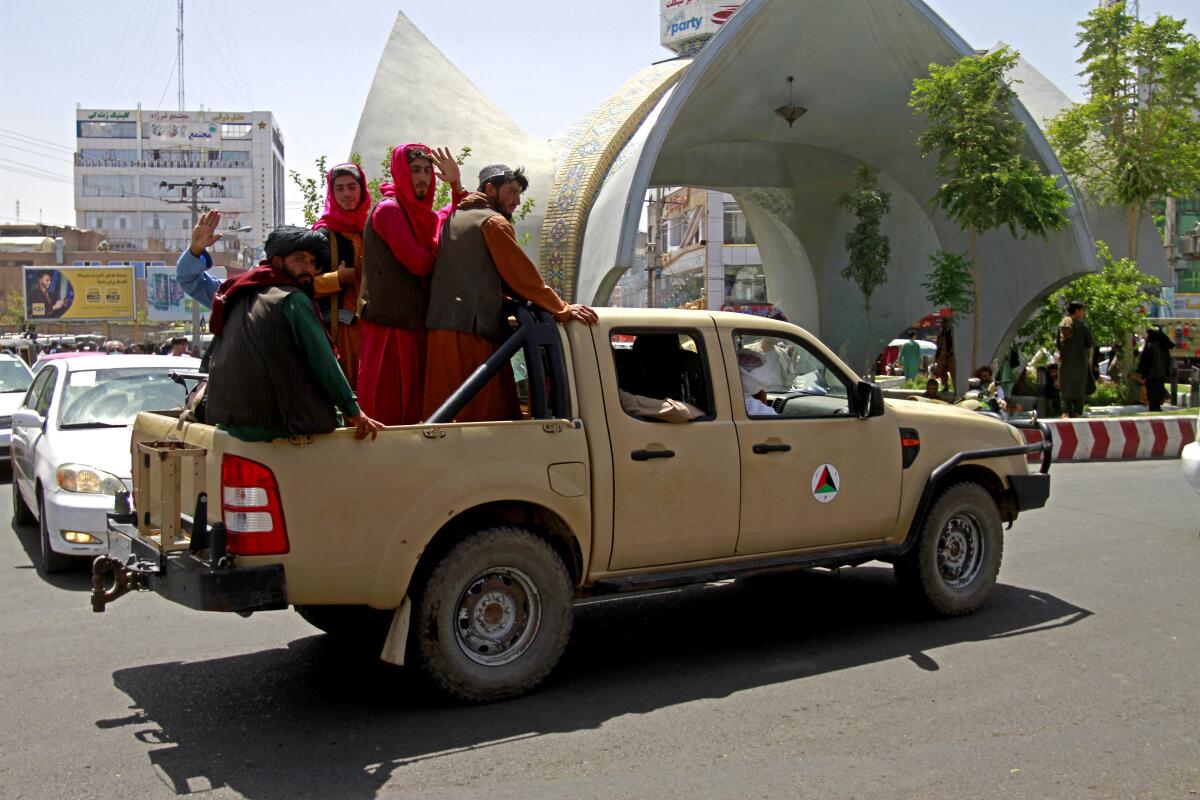
Afghan President Ashraf Ghani, in his first televised address since the Taliban seized much of the country in a lightning offensive spanning the last nine days, appeared almost disconnected from the drumbeat of disastrous news. He cited “achievements” of the last two decades, coinciding with the U.S. military presence, and appealed that they not go to waste.
The Afghan leader, who has so far rebuffed pressure to resign, offered no concrete steps to counter Afghanistan’s rapid unraveling, other than saying that unspecified “serious measures” were being taken.
“My focus is on preventing further instability, violence, and displacement of my people,” Ghani said in brief prerecorded remarks. He said he was holding consultations with Afghan elders, political figures and international representatives.
As Afghanistan cities fall to the Taliban, will U.S. troops end up like the American forces who returned to Iraq and stayed for years?
But only hours after Ghani spoke, insurgents claimed a huge new prize: the country’s fourth-largest city. The fall of Mazar-i-Sharif was particularly significant, not only because of its strategic position as the main hub of the country’s north, but because it was defended by a pair of powerful ex-warlords whose fighters — unlike the Afghan security forces in most locales — had appeared prepared to offer staunch resistance.
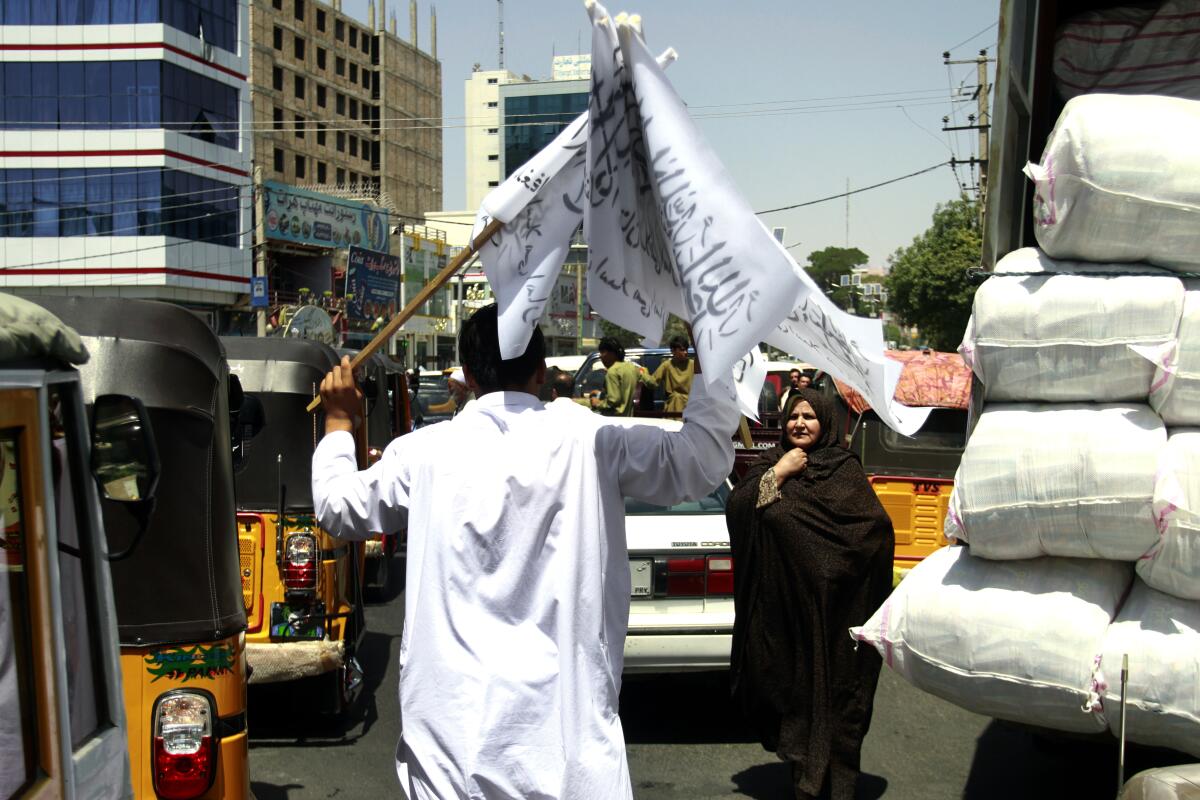
Afghanistan’s warlord figures, however, are also known to cut deals and stage strategic retreats when their own survival is at stake. Reports circulated that the two prominent Taliban foes with substantial militias loyal to them — Atta Mohammad Noor and Abdul Rashid Dostum — took refuge in neighboring Uzbekistan. Only days earlier, Ghani had flown to Mazar to try to win pledges they would fight to keep the city from falling.
Earlier Saturday, pressing ahead with an onslaught that has left more than half of Afghanistan’s provincial capitals in their hands, Taliban fighters overran Pul-e-Alam, a gateway town south of Kabul, according to news agency reports citing local officials. The province of Paktika, bordering Pakistan, was also said to be in Taliban hands.
Rounding out a day of setbacks, the eastern province of Kunar and Mehtar Lam, the provincial capital of Laghman province northeast of Kabul, fell without fights, according to Afghan lawmakers. And the central province of Daikundi surrendered with only two gunshots heard in the capital, Nili, a lawmaker said, according to the Associated Press.
The Taliban’s stunning territorial gains of recent days — together with the seizure of millions of dollars of U.S.-bankrolled military equipment — marked a high-water point in the Taliban drive to return to power after being toppled in a U.S.-led invasion following the terrorist attacks of Sept. 11, 2001. The Islamist group, which had harbored the Al Qaeda extremists who launched the attacks on New York and the Pentagon, imposed brutal fundamentalist rule for five years before losing power.
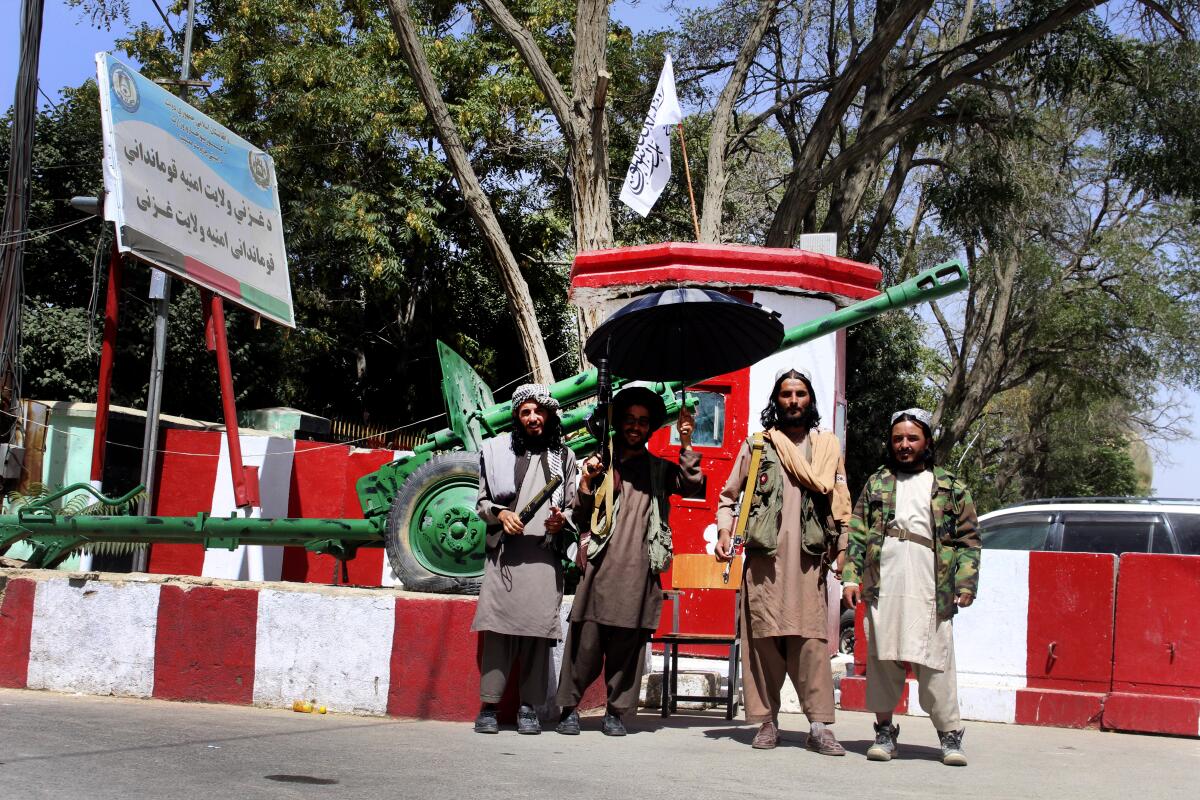
In what has become a pattern repeated across Afghanistan’s north, south and west, Taliban fighters were reported to have encountered little resistance from Afghan security forces when they took control of Pul-e-Alam, the capital of Logar province, only 40 miles from Kabul.
As the week drew to a close, the Taliban movement cemented its grip on a string of cities including Kandahar, the country’s second-largest metropolis and the main hub of Afghanistan’s south. The fall of Mazar-i-Sharif leaves the country’s three biggest cities after Kabul in the insurgents’ control.
With the wholesale crumbling of Afghan forces the United States spent billions of dollars equipping and training, the only major city still in government hands besides Kabul was Jalalabad, in the east.
The insurgents have been methodically cutting transport links between Kabul and other major cities, taking aim Saturday at Maidan Shahr, on the main highway connecting the national capital and Kandahar, according to news agencies.

Most of the U.S. forces dispatched to help secure diplomatic personnel and Afghan support staff — two Marine battalions and an infantry battalion — were to be in place by Sunday evening, the Pentagon said. On Saturday, after a White House statement referred to a total of 5,000 troops aiding in the operation, a senior Defense Department official then broke that number down as 4,000 military personnel en route or already on the ground, with an additional 1,000 now being deployed as well.
Americans support the U.S. withdrawal, polls have shown, but the U.S. exit is proving ugly.
Although it wasn’t clear whether the Taliban would move swiftly to try to take Kabul, or simply isolate it while weighing the next step, more Western countries are preparing to pull up diplomatic stakes. U.S. diplomats, along with those of other countries, were destroying sensitive documents in preparation for possible departure.
But the pullback comes as tens of thousands of Afghans are frantically pleading for documentation to help them leave the country.
The internally displaced — whose ranks have grown by 250,000 just since May, according to the United Nations — are camped out in Kabul parks and squares, having made the trek from the provinces to seek safety in Kabul. Food hoarding is taking hold across the city, and many of those who fled the Taliban’s advance have nothing but clothes and perhaps some simple bedding, humanitarian groups said.
Speaking in New York on Friday, U.N. Secretary-General Antonio Guterres said Afghanistan was “spinning out of control” and called for urgent talks to stem the growing chaos.
“This is the moment to start serious negotiation,” he said. “This is the moment to avoid a prolonged civil war, or the isolation of Afghanistan.”
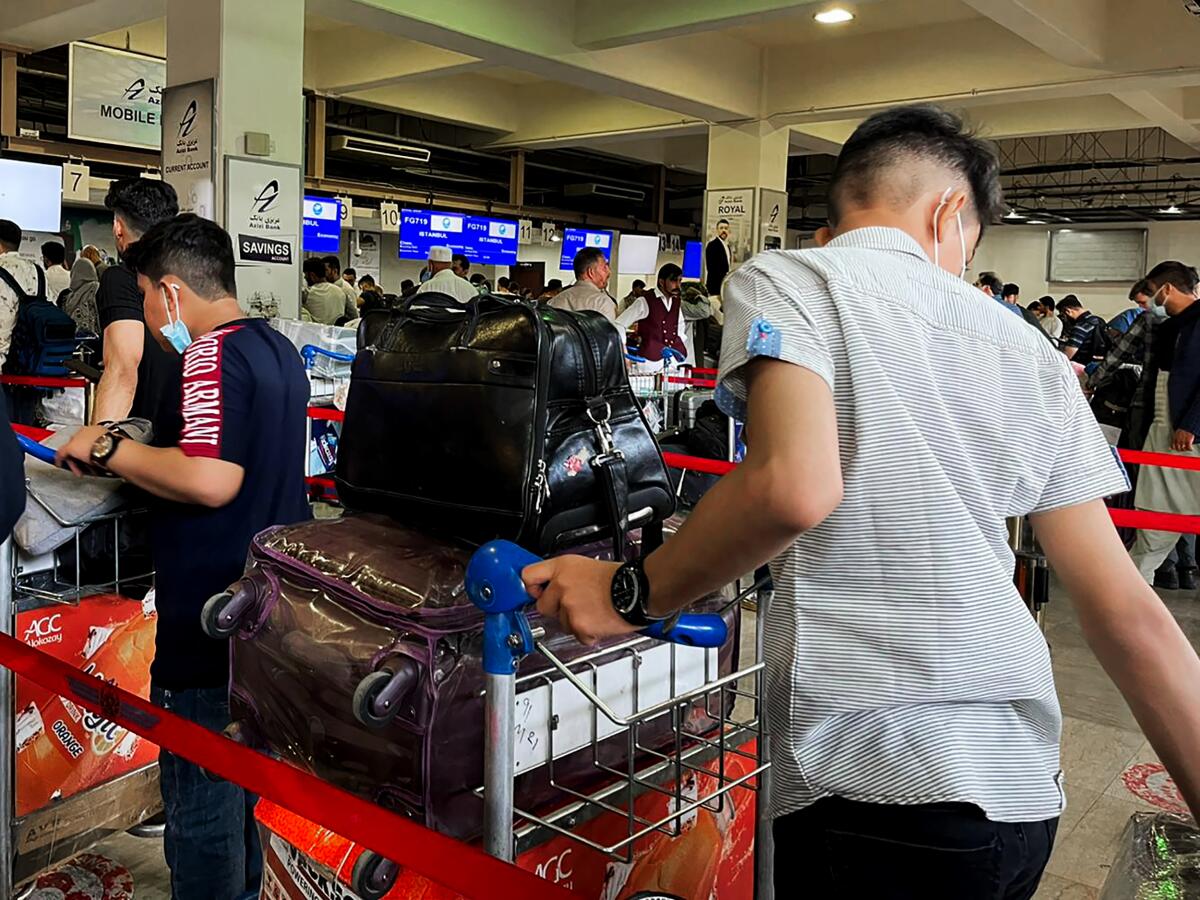
The threat of international pariahdom is one of the few possible means of leverage the international community says it can try to wield against the Taliban. So far, warnings of an aid cutoff have had little apparent effect.
It was unclear whether the Biden administration would be able to keep to its pledge to finish withdrawing U.S. troops by month’s end. Before the current phase of the crisis erupted, the U.S. presence had been reduced to between 2,500 and 3,000 troops. Now an equal number are arriving.
At the onset of this month’s Taliban offensive, U.S. officials pointed to the numerical superiority and firepower advantages of Afghan security forces, but there is growing acknowledgment that the Afghan police and military have been hollowed out by rampant corruption, low morale, a lack of basic supplies like food, and the abrupt withdrawal of the technical support of U.S.-paid contractors.
Times staff writers Yam reported from Kabul and King from Washington.
More to Read
Start your day right
Sign up for Essential California for news, features and recommendations from the L.A. Times and beyond in your inbox six days a week.
You may occasionally receive promotional content from the Los Angeles Times.

